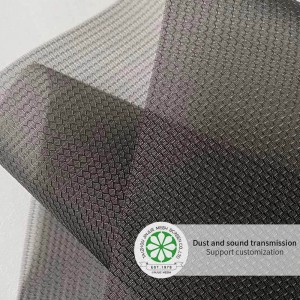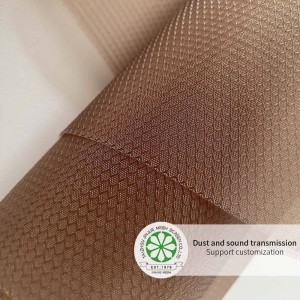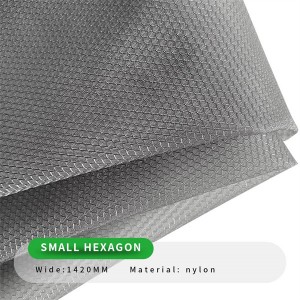Mesh fabric is a barrier material that is produced from connected strands. These strands can be crafted from fibers, from metal, or any flexible material. The connected threads of the mesh produce a web-like net that has many different uses and applications. Mesh fabric can be highly durable, strong, and flexible. They are known for, and commonly used in scenarios where liquid, air and fine particulate needs permeability.
Mesh fabric is fabricated most commonly from stainless steel, copper, bronze, polyester (or nylon) and polypropylene. As the fibers are woven together, they create a very flexible, net-type finish that has a tremendous range of end-uses. It can be used in so many industries, including: the food industry; waste water industry (separating waste and sludge from water); hygiene and sanitary industry; pharmaceutical industry; the medical industry (supporting internal organs and tissues); paper industry; and the transportation industry.
Mesh fabric can come in many different sizes, and are clearly numbered for understanding. For instance, a 4-mesh screen indicates that there are 4 “squares” across one linear inch of the screen. A 100-mesh screen simply indicates that there are 100 openings across one linear inch, and so on. To determine the mesh size, count the number of rows of mesh squares within that measured one inch linear space. This will provide the mesh size, and which is the number of openings per inch. Sometimes, mesh size could be detailed as 18×16, which defines that there are 18 holes across and 16 rows of openings down within each 1 inch square.
Mesh fabric particle size, however, is an indication of what size of matter can permeate and pass through the mesh screen. For instance, a 6-mesh powder contains particles that can pass through a 6 mesh screen.
The history of mesh fabric can be traced back to 1888, when a British mill owner bore into product the concept of a clean and breathable material that could withstand temperature changes. As the yarns are knitted or woven together, and with the open spaces between the yarn strands, it is a great material for apparel and fashion, and has been used in such finished products as dresses, wraps, gloves and scarves over the last century. When wet or dry, the material has great crocking values (which simply means that the dyes will not rub off). Mesh is also very easy to sew with.


英文版主图6-300x300.jpg)













